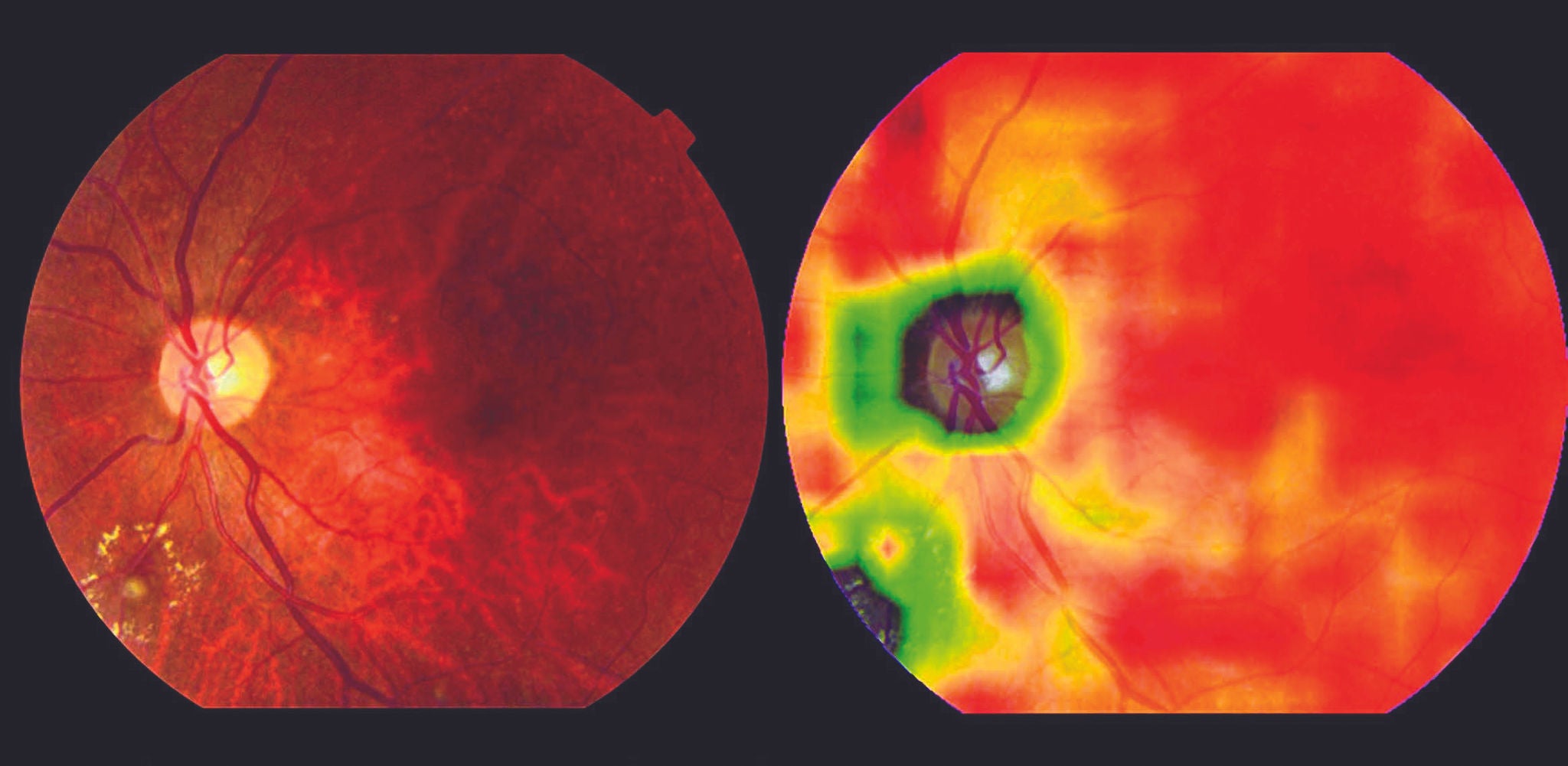
which highlights where the DR lesions are. PHOTO: SINGAPORE NATIONAL EYE CENTRE OCULAR READING CENTRE
It is also expected to be more accurate than existing tests, resulting in cost and manpower savings
Checks for eye diseases may become faster and cheaper from as early as next year, thanks to an artificial intelligence (AI) screening system that is being developed.
The AI system is expected to detect three major eye diseases with greater speed and accuracy than existing tests, resulting in manpower and cost savings.
It uses a machine learning technology that can be programmed to classify images of the retina into those with and without these eye diseases – diabetic retinopathy, glaucoma and age-related macular degeneration.
Half a million retinal images from people of different ethnicities, such as Chinese, Malays, Indians, Hispanics, African-Americans and Caucasians from the United States, Australia, China, Hong Kong, Mexico and Singapore, were used to train the AI system.
The system uses the world’s first and largest data set evaluating the use of machine learning technology to screen for eye diseases.
This study is a collaboration between the Singapore National Eye Centre (SNEC), Singapore Eye Research Institute (SERI), National University of Singapore’s School of Computing, and eye centres in the US, Australia, China, Hong Kong and Mexico.
It was published in the Journal Of The American Medical Association this month.
The AI system is in the second round of testing, with two more rounds to go, said Professor Wong Tien Yin, SNEC’s medical director and the study’s senior author.
“The next step is to train the AI system to predict which patients will have eye diseases in the future, simply by looking at their retinal images before they develop any diseases,” he added.
Prof Wong said the system could be rolled out as early as the end of next year.
It is expected to be more accurate than professional graders or optometrists who analyse retinal photographs, as the technology can recognise intricate structures and patterns which may not be visible to the human eye, he added.
“With the AI system, results (for the screening) should be instantaneous and it can potentially reduce 80 per cent of the workload of graders and optometrists, freeing up their time for treatment,” said Prof Wong, who is also chairman of SERI.
Diabetic retinopathy, a condition in which blood vessels in the retina are damaged and results in a loss of vision, is the leading cause of preventable blindness among working adults here.
More than 400,000 Singaporeans have diabetes, and one in three of them also have diabetic retinopathy.
With the number of diabetics here projected to reach one million by 2050, as many as 200,000 patients may have to be screened for diabetic eye diseases in future, double the 100,000 screened this year, said Prof Wong.
Patients are currently screened for diabetic eye diseases at 18 polyclinics and at general practitioner clinics as part of the Singapore Integrated Diabetic Retinopathy Programme. They wait about a day to get their results, as the images are sent to eye centres in SNEC and Tan Tock Seng Hospital for analysis.
Each screening costs $8 to $12 with subsidies and $25 to $30 without subsidies at polyclinics.
Contributed by

English
The Straits Times - AI system promises faster tests for 3 eye diseases (2).pdf

English
The New Paper - AI system for faster, cheaper and more accurate eye tests.pdf

Chinese
Shin Min Daily News - SNEC, SERI partner NUS to develop AI system to detect three major eye conditions.pdf














 Get it on Google Play
Get it on Google Play